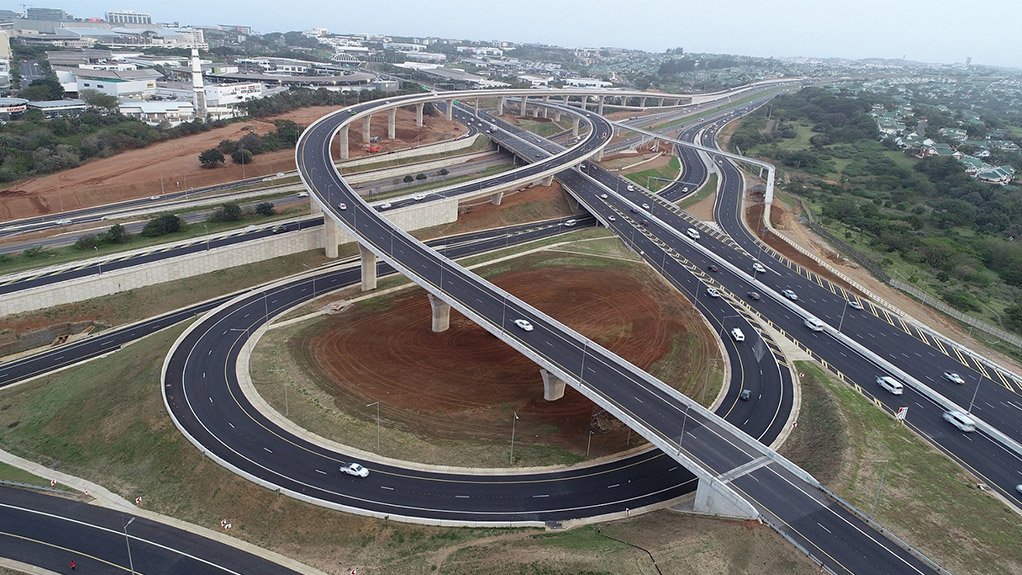According to the ‘Global Competitiveness Index’ compiled by the World Economic Forum and hosted on the World Bank's Prosperity Data360 platform, Namibia ranks highest in sub-Saharan Africa for road quality, achieving a score of 5.31 out of seven on a scale used to evaluate infrastructure.
Following Namibia are Rwanda, Mauritius and South Africa, each scoring about 4.5. In stark contrast, Zimbabwe lags significantly, with a score of just 2.8 – well below the global average for road quality.
Namibia has performed so well in terms of road quality because the nation has consistently invested not only in new roads, but has also prioritised maintenance, EY senior manager Jakob Schleu pointed out during the Chartered Institute of Logistics and Transport conference hosted at the Automechanika trade show and exhibition, in Johannesburg, on November 19.
“Mid-range performers such as Senegal, Kenya or Tanzania are still not doing too bad, but they’re usually struggling with the road infrastructure because of the additional demand that is placed on them, such as the growing economy, growing urbanisation or lack of maintenance,” he explained.
Schleu noted that the lowest-performing countries in terms of road quality struggle significantly with corruption and mismanagement.
Countries such as Nigeria also fall lower on the list owing to rapid urbanisation, where infrastructure development is not able to keep up.
Countries such as the Congo-Brazzaville also fare poorly owing to significant political instability, resulting in a very unattractive environment for international financiers of infrastructure.
“Overall, we see very strong variances in the different countries,” Schleu noted.
Aside from these factors, he said, a funding gap was primarily responsible for Africa’s underdeveloped roads.
He explained that funding for African infrastructure was predominantly sourced from four key contributors.
“Between 40% and 45% is financed directly by governments,” he stated, underscoring the substantial domestic commitment to infrastructure investment.
China follows as the second-largest contributor, injecting about $25.7-billion a year, which accounts for 25% of all infrastructure funding on the continent.
The third-largest source is a consortium of Group of 8 countries and prominent international financial institutions, collectively providing $20.2-billion each year.
Finally, the private sector accounts for about 11% of funding, which highlights the increasing role of public-private partnerships (PPPs) in addressing infrastructure needs.
Despite these contributions, the infrastructure investment gap persisted, Schleu said.
He noted that African governments currently allocated just 3.5% of GDP to infrastructure, falling short of the estimated requirement of 4.5%. This one-percentage-point shortfall equates to about $31-billion a year, exacerbating the continent’s development challenges.
Schleu noted that inefficiencies compound the issue, costing Africa an estimated $75-billion a year.
“It is actually possible to cover that gap with improved efficiency,” he emphasised.
He noted that PPPs had emerged as a promising mechanism to finance large-scale projects by distributing financial burdens and associated risks between the public and private sectors.
“These constructs have been proven to be quite effective in mobilising capital by taking some of the risks out of the market,” Schleu explained.
However, Africa’s reliance on external funding remains a defining characteristic of its infrastructure landscape. Many governments face difficult trade-offs between funding infrastructure and other critical sectors such as education and healthcare.
Financing road infrastructure projects, in particular, often proves complex, as many African markets lack the maturity to navigate these challenges effectively, Schleu said.
Additionally, there is a persistent lack of investment-ready projects, further hampering development efforts.
Corruption and policy instability pose significant barriers to progress, Schleu said, citing Transparency International’s ‘Corruption Perceptions Index’, which frequently ranks many African countries poorly, reflecting widespread mismanagement of funds.
“High levels of corruption deter investors and lead to mismanagement of funds,” he explained.
Further, unstable policies also discouraged long-term investment. Frequent regulatory changes, uncoordinated policies between borders and inconsistent enforcement of incentives created uncertainty for potential investors, he said.
“Maintaining consistent policies provides certainty for investors required for long-term investment,” Schleu stated, adding that inconsistent tax laws and a lack of robust incentives further inhibited financing.
Debt sustainability was another growing concern. The median debt-to-GDP ratio in sub-Saharan Africa had risen from 31% in 2012 to more than 50% in recent years, limiting fiscal space for infrastructure investment, Schleu pointed out.
He noted that poor-quality feasibility studies, project delays and inadequate risk allocation mechanisms exacerbated these challenges, often resulting in projects that failed to reach completion.
Despite these obstacles, Schleu expressed cautious optimism about future developments, particularly in the context of the African Continental Free Trade Agreement (AfCFTA).
“The AfCFTA will promote and integrate trade. It will leverage continental free trade and will require improved infrastructure across the continent,” he noted.
Schleu said the AfCFTA could serve as a catalyst for enhanced regional connectivity and economic growth, provided that the infrastructure gap was adequately addressed.
Edited by: Chanel de Bruyn
Creamer Media Senior Deputy Editor Online
EMAIL THIS ARTICLE SAVE THIS ARTICLE
ARTICLE ENQUIRY
To subscribe email subscriptions@creamermedia.co.za or click here
To advertise email advertising@creamermedia.co.za or click here













